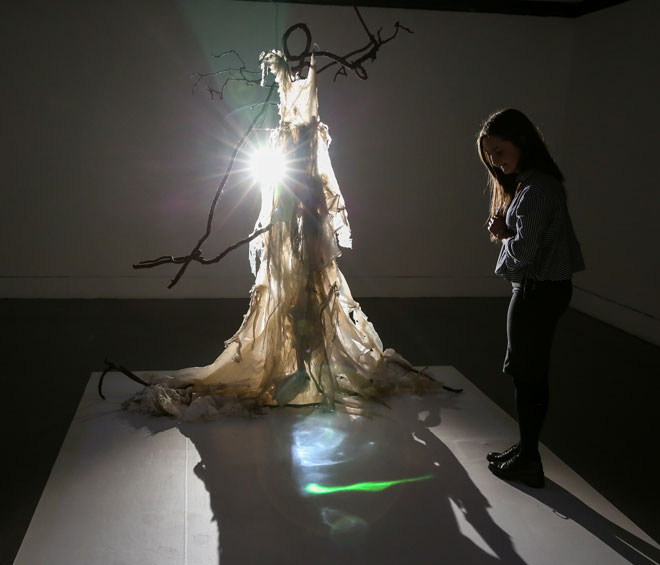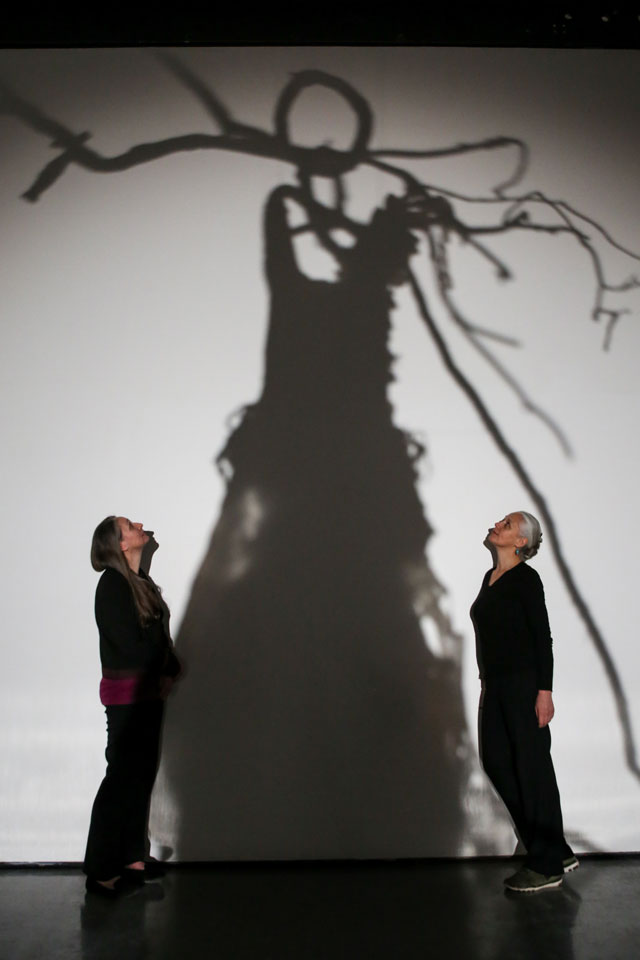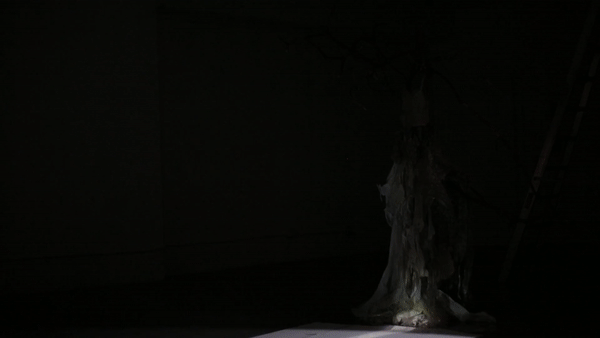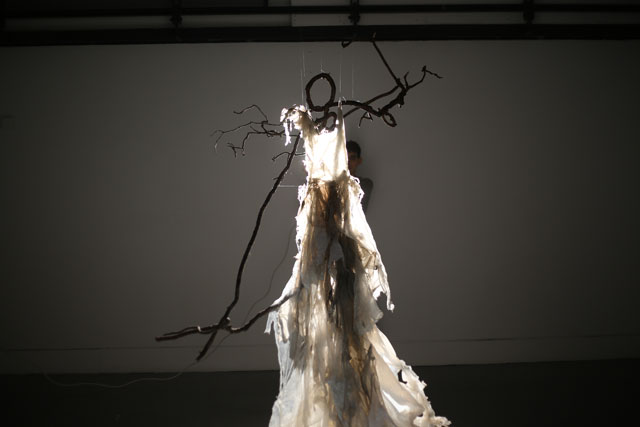
Centrespace, Dundee Contemporary Arts Centre
22 March– 21 April 2018
by CHRISTIANA SPENS
Twenty years ago, two sisters – designer and social artist Helen Storey and developmental biologist Kate Storey – collaborated on a groundbreaking exhibition called Primitive Streak. The award-winning show, which was part of the Wellcome Trust’s Sciart initiative, used 27 dresses and textile forms to show the first 1,000 hours of human life.
The installation was innovative and engaging and laid the foundation for their most recent collaboration, Neurogenesis – another sophisticated and participatory way to allow the public to engage with the latest developments in science and technology. Developed in collaboration with technological innovation studio Holition, and supported by the Wellcome Trust and LifeSpace Science Art Research Gallery at the University of Dundee, Neurogenesis further explores the concerns that the sisters began with – what it is that makes up human life? And what does it mean to be human?

Kate and Helen Storey, Centrespace, Dundee Contemporary Arts Centre. Photograph: Erika Stevenson.
A central insight of Neurogenesis, inspired by the Storey sisters’ father being diagnosed with dementia, is the decline and disintegration of the mind and its memories, and what we think of as “humanity”, and, ultimately, how those characteristics or processes are in themselves part of what it is to be human. Using Kate’s experience as a developmental biologist, the installation centres around neurogenesis, the process of generating neurons. In particular, it explains the cellular and molecular mechanisms that are the foundation of this process in developing embryos, as well as in the part of the adult brain concerned with learning and memory. As Kate explains: “The work illuminates the cellular basis of the forming nervous system and invites juxtaposition of our understanding of this with our lived experience of the functions it underlines.”

Helen and Kate Storey: Neurogenesis: from neuron birth to all that we are, 2018, installation view.
Kate has researched how new neurons contribute to new nerve connections, which enable the making and persistence of memories. This process, however, slows and declines with age, particularly in those with advanced dementia. Having witnessed this firsthand, Kate and Helen Storey bring to their art and science installation a rounded insight into neurogenesis, and its social implications. In the exhibition, film footage of neurons being born is shown alongside a dress designed and made by Helen, constructed from plastics that have disintegrated over time due to their environment. Helen explains: “We have reflected on this by choosing materials that nature has acted upon, materials that are losing their original properties.”

Helen and Kate Storey: Neurogenesis: from neuron birth to all that we are, 2018, installation view. Photograph: Erika Stevenson.
The sisters have developed a truly collaborative installation that illuminates, uniquely and with a personal perspective, the ways in which the human nervous system is formed and then disintegrates. Ultimately, in learning about the ways in which nerve cells are formed, and therefore how memories are materially enabled to exist or be recorded, we are led to question what it means for those cells, and their memories, to cease to develop, and be lost, through a degenerative illness such as dementia. Who, or what, is left? How does one love someone who no longer remembers you? Do such human connections transcend their material destinies?
While Neurogenesisdoes not, and cannot, answer the questions that it inevitably raises, it is a poignant experience to be given the space to meditate on these questions that, although universal, are so often dismissed, out of fear or perhaps simply ignorance. But, as the Storey sisters show, science and technology are continuing to find ways to shed light on these human processes, and therefore to invite further thought, observation and discussion.

Helen and Kate Storey: Neurogenesis: from neuron birth to all that we are, 2018, installation view. Photograph: Erika Stevenson.
Indeed, the central idea of Neurogenesis, really, is the nature of collaboration, and its significance in what it is to be human. While the sisters’ father may not be able to keep remembering his own life or others’, due to the affliction of natural neurological processes – a gradual, dismaying mortality of the mind – their project clearly shows that no individual is expected to remember everything or, ultimately, anything; society, held together by both art and science, provides a communal memory and ever-developing extension of the mind, in which what we lose in individual neurons and people, we rebuild through social, intellectual and artistic structures.
In this vein, Helen and Kate Storey partnered with Holition, which takes a creative and collaborative approach to technology, using it as a way of bringing people together and communicating scientific findings in interesting and unusual ways. In Neurogenesis, the studio used motion-tracking technology to encourage a participatory, intimate connection between the viewer and the process of neurogenesis itself. In bringing people into an abstract biological process, by projecting film on to the dress, hung on a tree, they invite viewers to understand the mechanism and its implications in an immersive way.
Neurogenesis, then, is a fascinating and uplifting meeting of difficult ideas, presented in a way that invites collaboration and connection on every level, and ultimately responds to lived experience in a thoughtful and inventive manner, which is moving in itself.